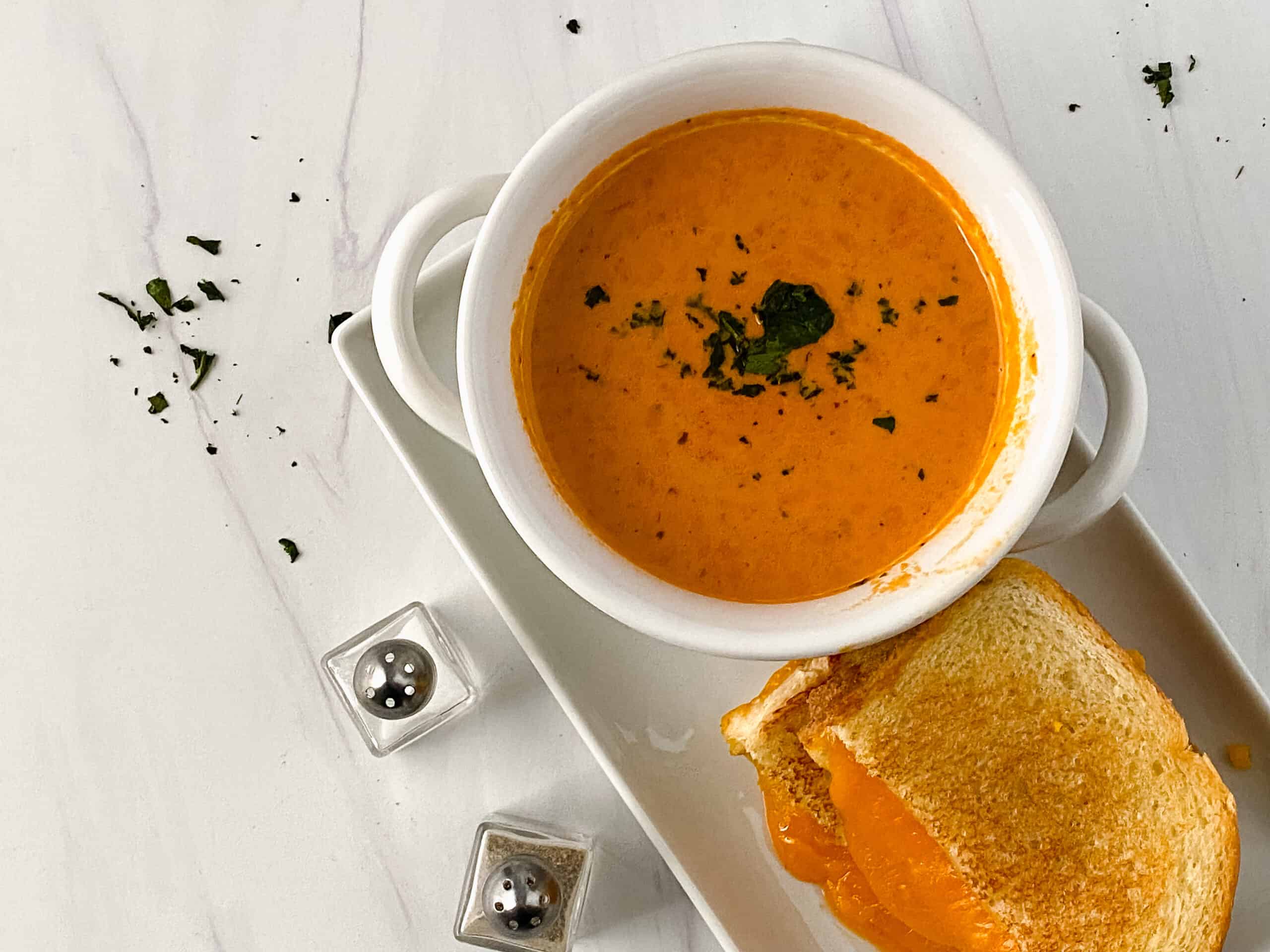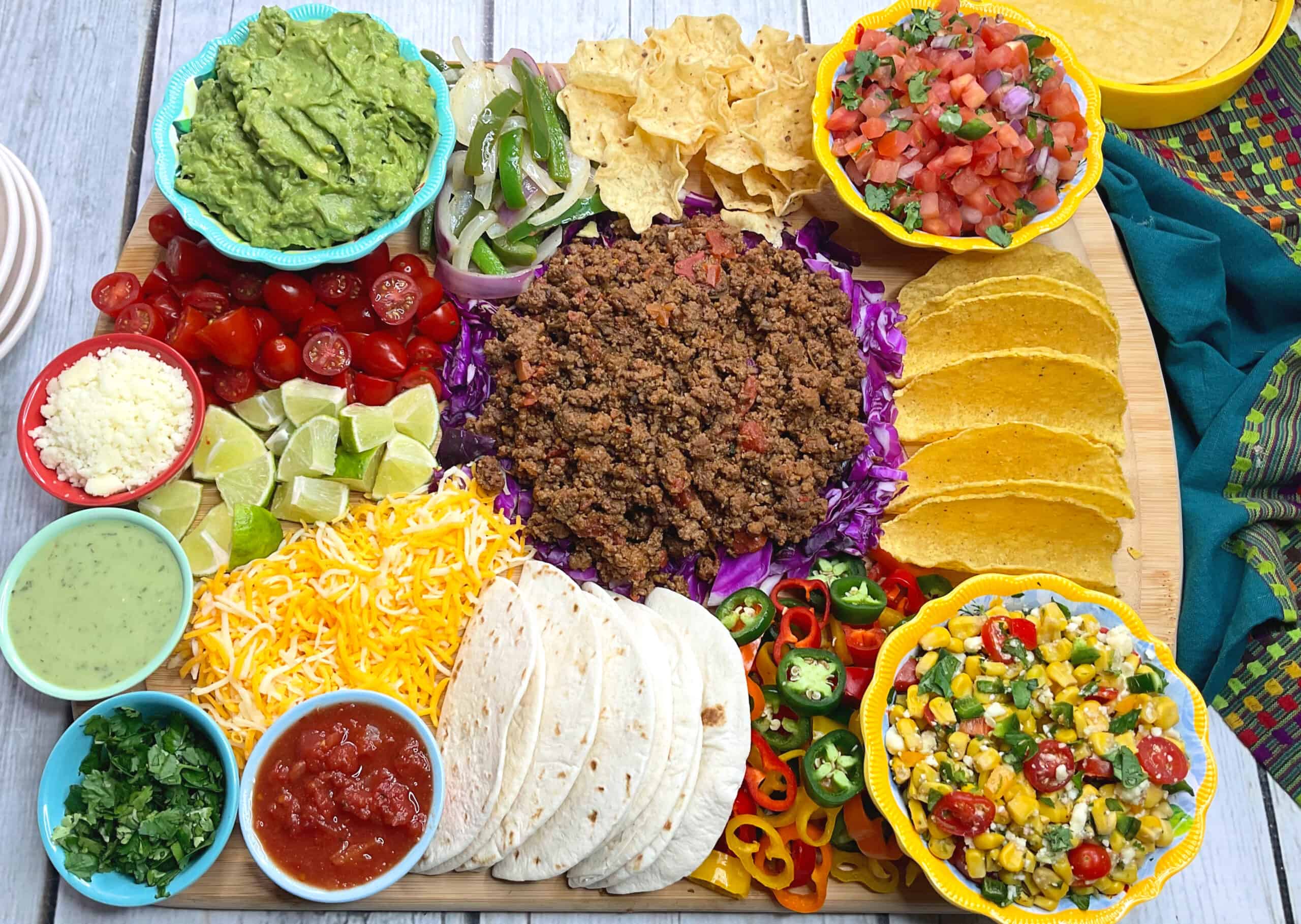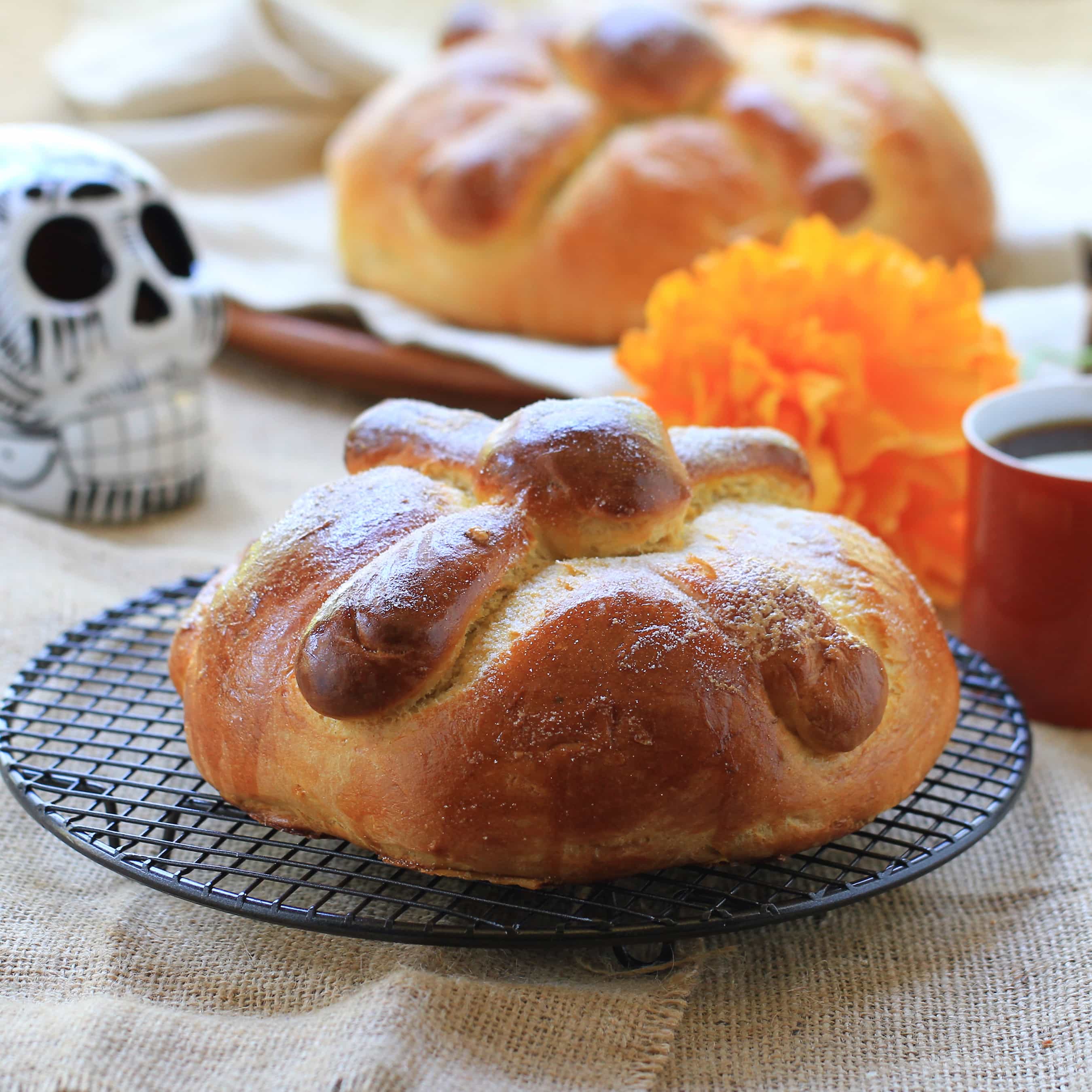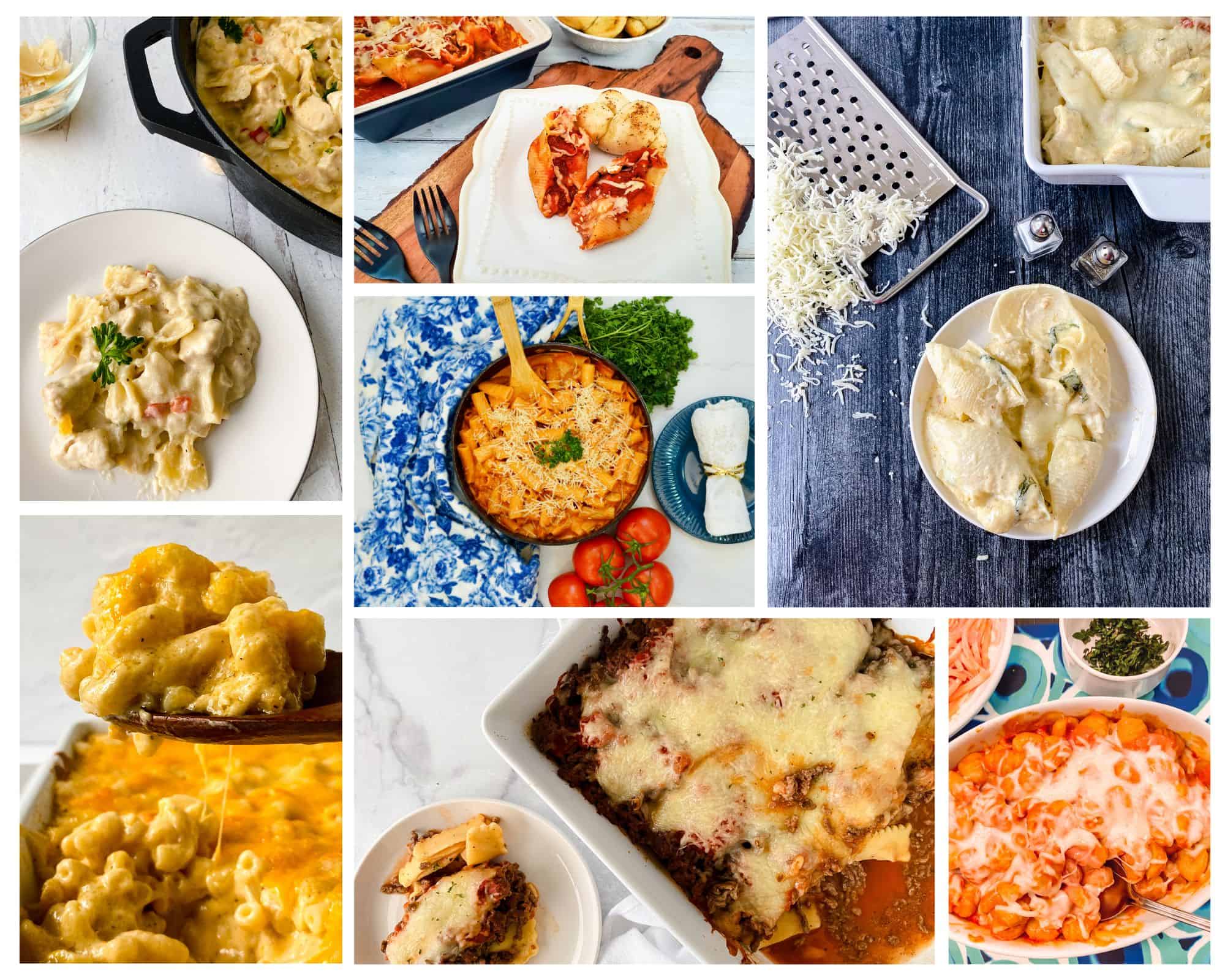The Most Delicious Gluten-Free Christmas Cookies
Want to make the most delicious gluten-free Christmas cookies for the holidays? Save this easy recipe for when you bake your holiday sugar cookies.

As the holiday season unfolds, the sweet aroma of freshly baked cookies wafts through homes, signaling the arrival of cherished traditions and joyous celebrations. However, for those navigating the realm of gluten-free living, the quest for delectable holiday treats can often be a challenging one. The world of gluten-free baking presents unique hurdles, with traditional recipes requiring careful adaptation to ensure the perfect balance of flavor, texture, and festive spirit.
After trying several gluten-free cookie recipes, I tweaked them and landed on this version. These gluten-free Christmas cookies prove that dietary restrictions need not hinder the joy of seasonal indulgence. If you have a child with food allergies, bake these delicious cookies and take them with you in a cookie box or tin to your next holiday party, whether it’s a family gathering or a school event.

Keep reading to find invaluable tips to make your gluten-free baking experience seamless and delightful. This simple recipe uses ingredients you can find at most grocery stores or on Amazon.
Enjoy the holiday season with these Gluten-Free Cut-Out Christmas Cookies with Icing recipe! These delicious treats, decorated with colorful icing and sprinkles, are a festive take on the traditional cookie that everyone can enjoy, regardless of dietary restrictions.
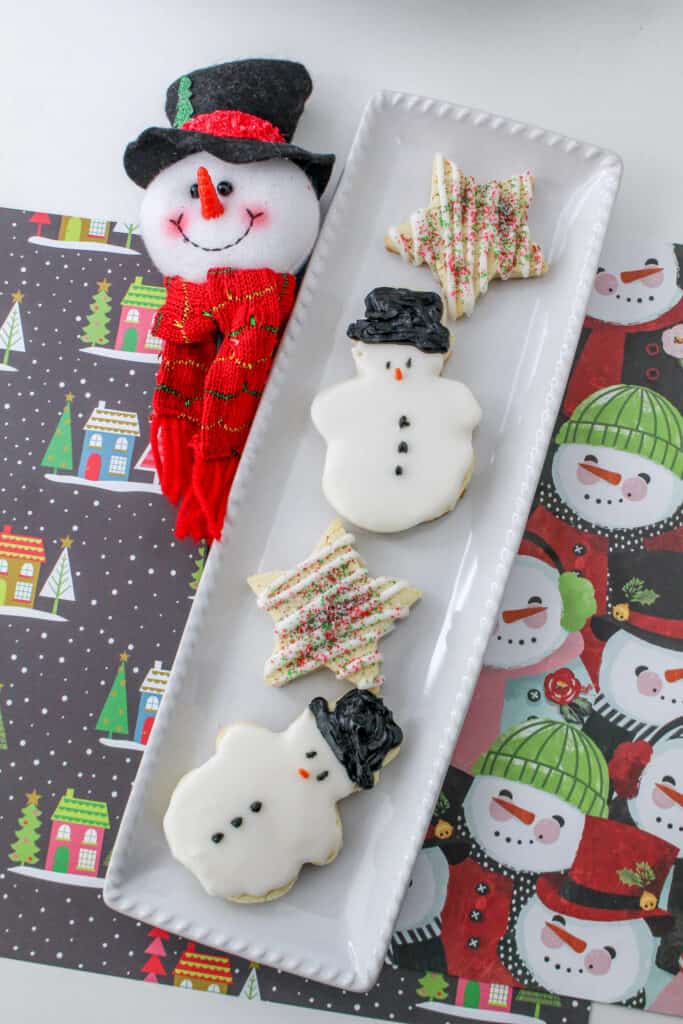
Gluten-Free Cut-Out Christmas Cookies
Prep Time: Approximately 20 minutes (not including chill time)
Yield: 2 dozen medium-sized Christmas cookies, depending on the size of your cookie cutters
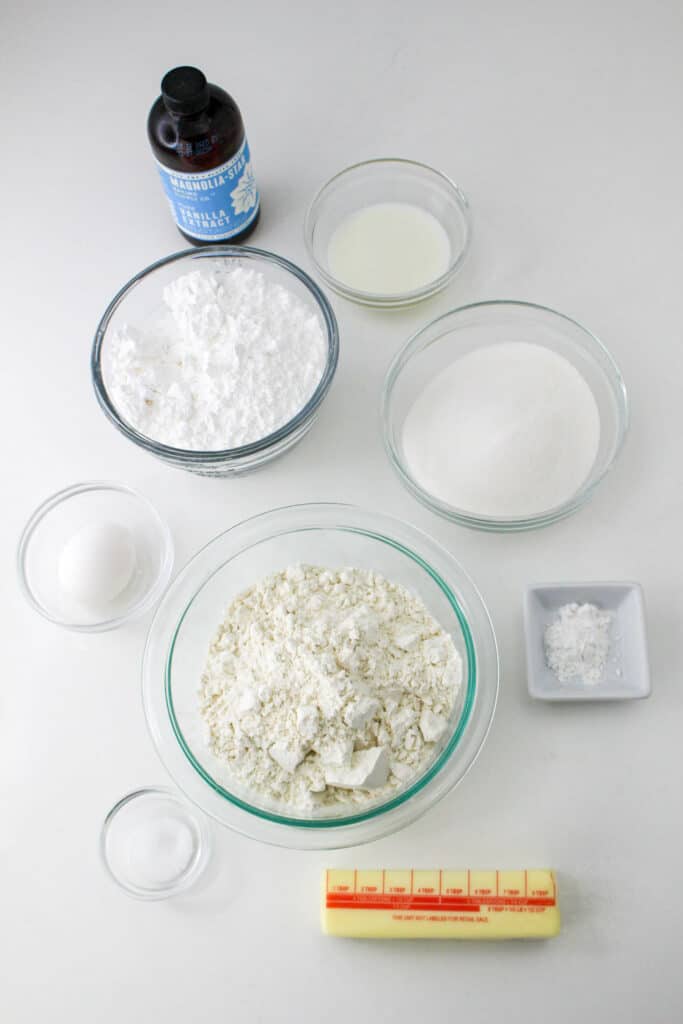
Ingredients
For the Cookies:
- 2 cups gluten-free all-purpose flour blend
- 1 teaspoon baking powder
- 1/2 teaspoon salt
- 1/2 cup unsalted butter, softened
- 1 cup granulated sugar
- 1 large egg
- 2 teaspoons vanilla extract
- 2 to 4 tablespoons milk (or non-dairy milk for a dairy-free option)

For the Icing:
- 2 cups powdered sugar
- 1-2 tablespoons milk (or non-dairy milk for a dairy-free option)
- 1/2 teaspoon vanilla extract
- Food coloring (optional)
- Sprinkles or edible glitter (optional)

Instructions
- Preheat your oven to 350°F (175°C). Line a baking sheet with parchment paper.
- In a medium bowl, whisk together the gluten-free flour, baking powder, and salt. Set aside.
- In a large mixing bowl, cream together the softened butter and sugar until light and fluffy, using a hand mixer or stand mixer.
- Beat in the egg and vanilla extract until well combined.
- Gradually add the dry ingredients to the wet ingredients, mixing until a dough forms. If the dough is too crumbly, you can add a little milk, a tablespoon at a time, until it’s manageable.
- Transfer the dough to a sheet of plastic wrap. Wrap tightly and refrigerate for at least 1 hour.
- Place a sheet of parchment paper on your work surface and dust it with gluten-free flour. Roll out the cookie dough to about 1/4-inch thickness. Use your favorite Christmas cookie cutters to cut out shapes from the dough. Carefully transfer the cut-out cookies to the prepared baking sheet, leaving some space between each cookie.
- Bake the cookies in the preheated oven for 8-10 minutes, or until the edges are lightly golden. Be careful not to overbake. Remove from the oven and let them cool on the baking sheet for 5 minutes, then transfer the cookies to a wire rack to cool completely.
- In a medium bowl, whisk together powdered sugar, milk, and vanilla extract until smooth and creamy. If the icing is too thick, add a little more milk. If it’s too thin, add more powdered sugar until you reach your desired consistency. If you want to make different colors of icing, divide the icing into separate bowls and add food coloring to each bowl.
- Once the cookies are completely cool, use a small spatula or a pastry bag to ice the cookies with the prepared icing. Add sprinkles or edible glitter on top of the icing, if desired.
- Allow the icing to set for a few hours or overnight until it hardens.
- Once the icing is set, your gluten-free cut-out Christmas cookies are ready to be enjoyed! Store them in an airtight container at room temperature for up to one week.
Pro tip: Use milk if dough is too dry!
Gluten-free flour blends can vary greatly. If the dough is too sticky, do not add the milk to the dough and add additional flour a tablespoon at a time. If the dough is too dry, add additional milk a little at a time until the dough holds together when mashed into a ball in your hand.
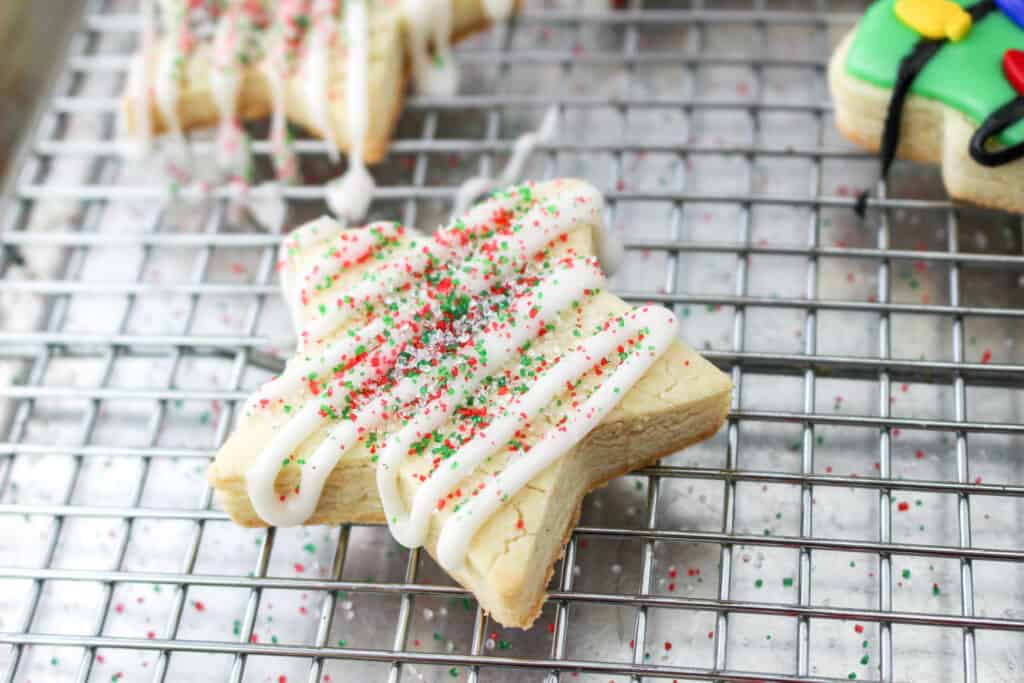
If you make these cookies, let me know if this is one of your favorite gluten-free recipes.
Gluten Free Christmas Cookies
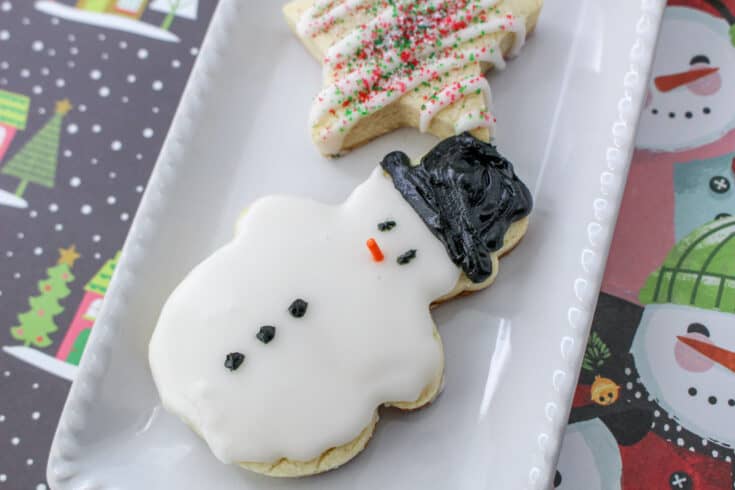
Ingredients
- For the Cookies:
- 2 cups gluten-free all-purpose flour blend
- 1 teaspoon baking powder
- 1/2 teaspoon salt
- 1/2 cup unsalted butter, softened
- 1 cup granulated sugar
- 1 large egg
- 2 teaspoons vanilla extract
- 2 to 4 tablespoons milk (or non-dairy milk for a dairy-free option), optional (see notes)
- For the Icing:
- 2 cups powdered sugar
- 1-2 tablespoons milk (or non-dairy milk for a dairy-free option)
- 1/2 teaspoon vanilla extract
- Food coloring (optional)
- Sprinkles or edible glitter (optional)
Instructions
- Preheat oven to 350°F (175°C). Line a baking sheet with parchment paper.
- In a medium bowl, whisk together the gluten-free flour, baking powder, and salt. Set aside.
- In a large mixing bowl, cream together the softened butter and sugar until light and fluffy, using a hand mixer or stand mixer.
Beat in the egg and vanilla extract until well combined. - Gradually add the dry ingredients to the wet ingredients, mixing until a dough forms. If the dough is too crumbly, you can add a little milk, a tablespoon at a time, until it's manageable.
- Transfer the dough to a sheet of plastic wrap. Wrap tightly and refrigerate for at least 1 hour.
- Place a sheet of parchment paper on your work surface and dust it with gluten-free flour. Roll out the cookie dough to about 1/4-inch thickness. Use your favorite Christmas cookie cutters to cut out shapes from the dough. Carefully transfer the cut-out cookies to the prepared baking sheet, leaving some space between each cookie.
- Bake the cookies in the preheated oven for 8-10 minutes, or until the edges are lightly golden. Be careful not to overbake. Remove from the oven and let them cool on the baking sheet for 5 minutes, then transfer the cookies to a wire rack to cool completely.
- In a medium bowl, whisk together powdered sugar, milk, and vanilla extract until smooth and creamy. If the icing is too thick, add a little more milk. If it's too thin, add more powdered sugar until you reach your desired consistency. If you want to make different colors of icing, divide the icing into separate bowls and add food coloring to each bowl.
- Once the cookies are completely cool, use a small spatula or a pastry bag to ice the cookies with the prepared icing. Add sprinkles or edible glitter on top of the icing, if desired.
- Allow the icing to set for a few hours or overnight until it hardens.
Once the icing is set, your gluten-free cut-out Christmas cookies are ready to be enjoyed! Store them in an airtight container at room temperature for up to one week.
Tips for the Perfect Gluten-Free Christmas Cookies

- Choose the Right Flour Blend: The foundation of any successful gluten-free cookie lies in selecting the appropriate flour blend. A combination of rice flour, almond flour, and tapioca flour often produces a texture that closely mimics traditional cookies. Experiment with various ratios to find the blend that suits your taste preferences.
- Embrace Nut Flours for Flavor and Texture: Almond flour, hazelnut flour, or coconut flour can impart a rich, nutty flavor and a delightful chewiness to your cookies. Incorporate these nut flours into your recipes for a taste that transcends the ordinary.
- Mindful Moisture Management: Gluten-free flours often absorb moisture differently than their wheat counterparts. To maintain the perfect balance, consider adding an extra egg, using applesauce, or incorporating Greek yogurt into your dough. These moisture-retaining agents contribute to a softer, more palatable cookie.
- Chill Your Dough: Gluten-free cookie dough benefits from a stint in the refrigerator before baking. Chilled dough helps control the spread of cookies during baking, resulting in a more appealing shape and texture.
- Experiment with Flavorful Add-Ins: Elevate your gluten-free cookies with an array of enticing add-ins. Whether it’s semisweet chocolate chips. dark chocolate chunks, dried cranberries, or chopped nuts, these additions not only enhance flavor but also contribute to a visually appealing and festive treat.
- Precision in Measuring: Accurate measurement is paramount in gluten-free baking. Invest in reliable measuring tools and weigh your ingredients when possible. Consistency in measurements ensures a more predictable outcome in your gluten-free creations.
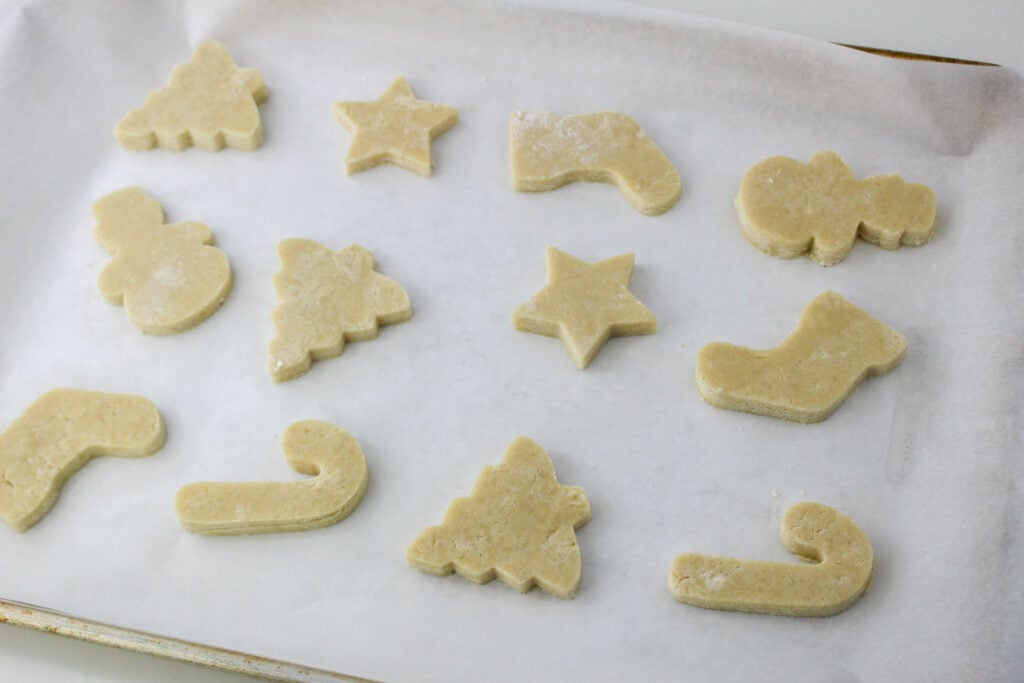
As we embark on the holiday baking season, armed with these tips, let’s celebrate the art of gluten-free baking and savor the magic of Christmas in every delightful, gluten-free bite. Stay tuned for an exquisite gluten-free Christmas cookie recipe that embodies the festive spirit without compromising on taste and texture.
Common mistakes when baking gluten free cookies
Baking gluten-free cookies can be a rewarding experience, but it also comes with its unique set of challenges.
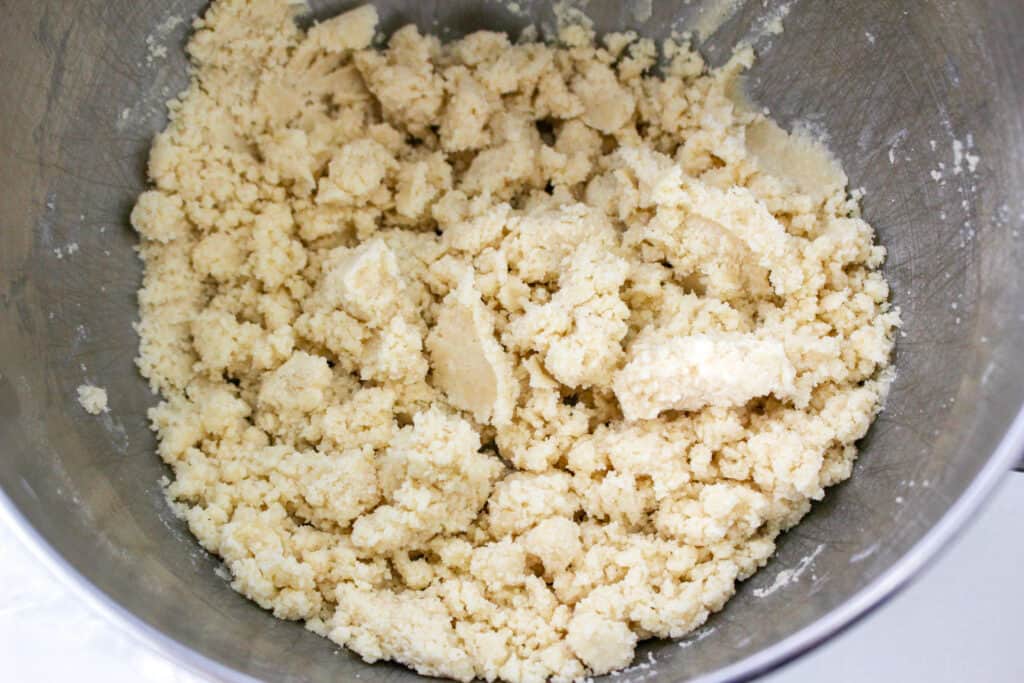
Here are some of the most common mistakes people make when baking gluten-free cookies:
- Overmixing the Dough: Gluten-free flours are often more delicate than traditional wheat flour. Overmixing the dough can lead to an undesirable texture in the finished product. Mix the ingredients until just combined to avoid overworking the gluten-free flour blend.
- Using the Wrong Flour Blend: Different recipes may require different flour blends, and not all gluten-free flours are created equal. Using a single type of flour may result in a gritty or crumbly texture. Experiment with combinations to find the right blend for your specific recipe.
- Ignoring the Importance of Binders: Gluten plays a crucial role in providing structure and elasticity in traditional baking. In gluten-free baking, it’s essential to add binders like xantham gum or guar gum to prevent the cookies from falling apart. Ignoring this step can result in crumbly and dry cookies.
- Skipping the Chill Time: Chilling the cookie dough is often overlooked in gluten-free baking. Chilled dough helps control the spread of the cookies during baking and contributes to a better texture. Don’t skip this step, especially if the recipe recommends it.
- Not Adjusting Liquid Content: Gluten-free flours may require different amounts of liquid compared to traditional flours. Failing to adjust the liquid content in your recipe can lead to cookies that are too dry or too moist. Pay attention to the consistency of the dough and make adjustments as needed.
- Using Room-Temperature Ingredients: While room-temperature ingredients are often preferred in baking, gluten-free recipes may benefit from using slightly chilled ingredients. This helps maintain the dough’s structure and prevents cookies from spreading too much during baking.
- Not Testing for Doneness: Gluten-free cookies may have a different appearance when done compared to traditional cookies. They might not brown as much, so rely on touch and texture to determine doneness. Don’t be afraid to take them out of the oven when they’re still soft; they’ll continue to firm up as they cool.
- Lack of Patience: Gluten-free baking can be a bit more time-consuming and may require extra attention to detail. Be patient and give yourself time to experiment and adjust your technique to achieve the perfect gluten-free cookie.
By avoiding these common pitfalls, you’ll be better equipped to create gluten-free cookies that are not only delicious but also boast the ideal texture and appearance.
More delicious gluten-free recipes
- Amazing Gluten Free Lemon Blueberry Muffins
- No Bake Gluten-Free Sugar Cookie Truffles
- Gluten-Free Low Carb Chocolate Mug Cake
- Decadent Gluten-Free Flourless Chocolate Brownies


